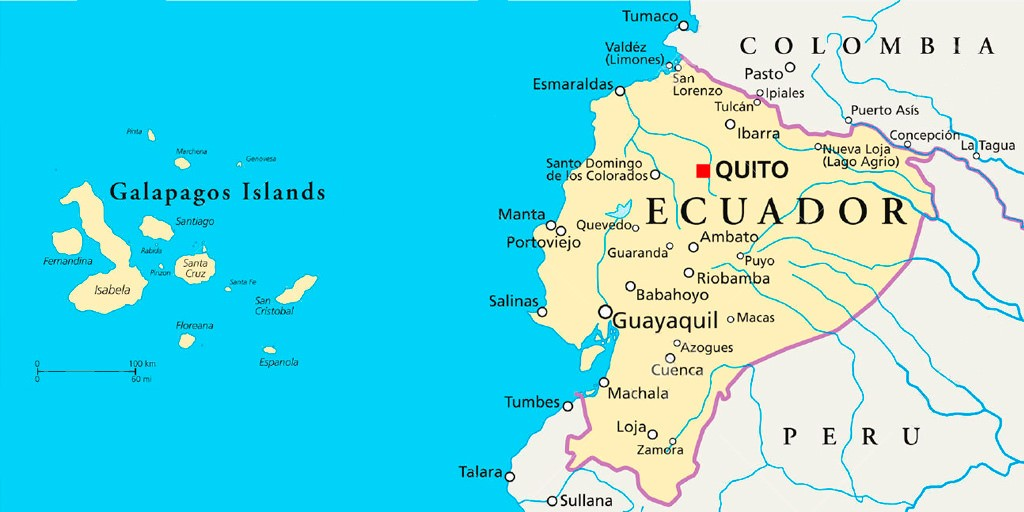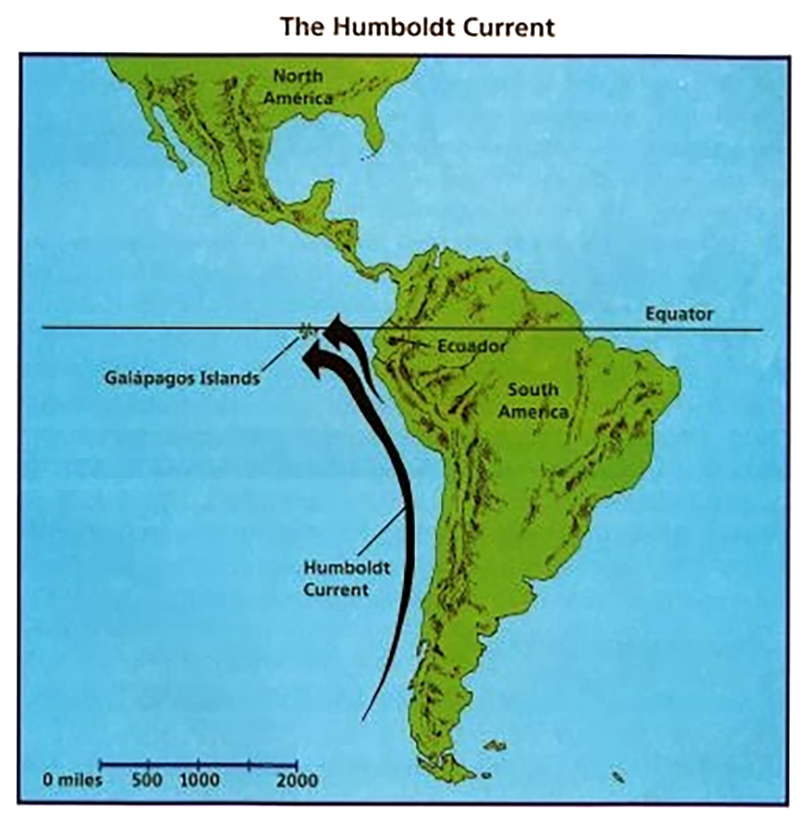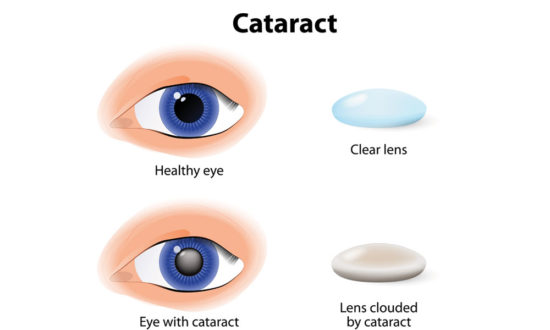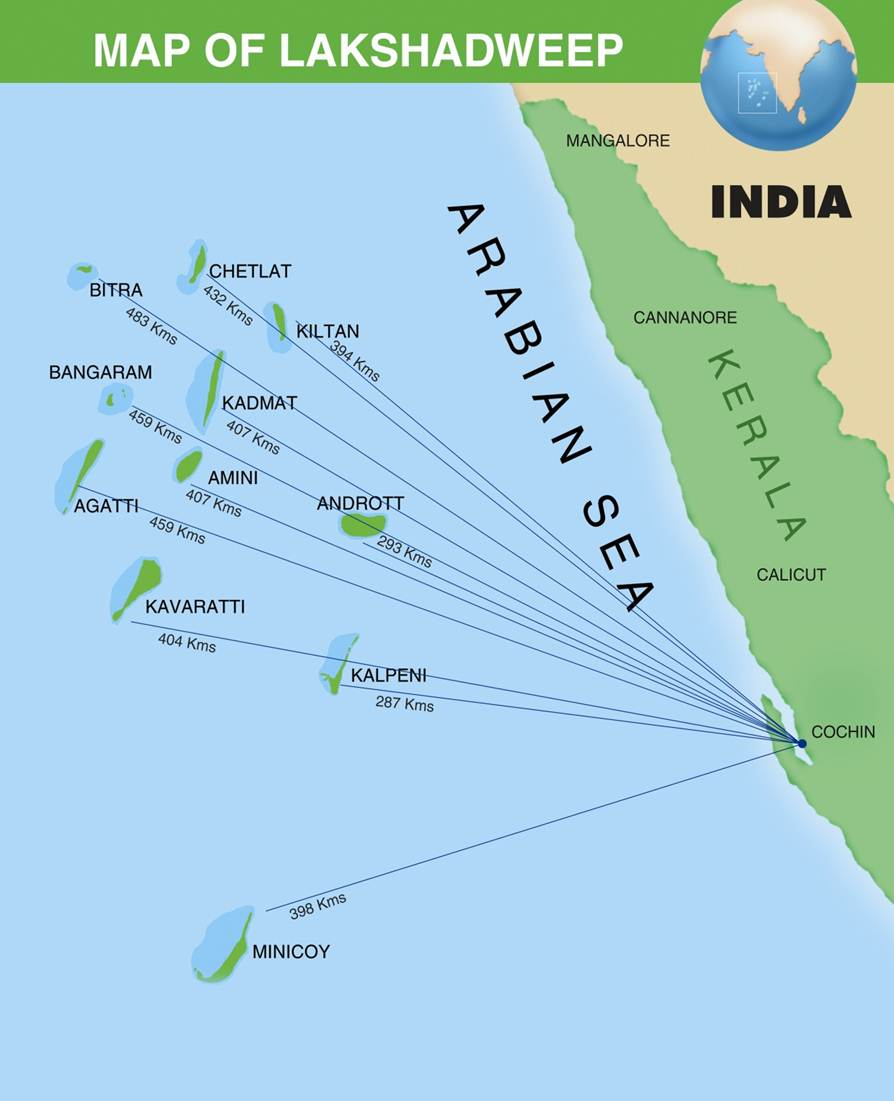Biodiversity & Environment
Large Population and Assets to be Affected by Sea Level Rise
Why in News
Recently, a study in journal Scientific reports made predictions that a large population and assets will be globally affected as a consequence of Sea Level Rise (SLR).
Key Points
- SLR is a consequence of climate change, which is predicted to increase coastal flooding by 2100.
- The global population potentially exposed to episodic coastal flooding will increase from 128-171 million to 176-287 million by 2100.
- 0.5-0.7% of the world’s land area is at risk of episodic coastal flooding by 2100, impacting 2.5-4.1% of the population.
- The value of global assets exposed to coastal flooding is projected to be between USD 6,000-9,000 billion or 12-20% of the global GDP.
- Globally, of the 68% area that is prone to coastal flooding, over 32% can be attributed to regional SLR.
- For most of the world, flooding incidents that are typically associated with a 1 in a 100-year event could occur as frequently as 1 in 10 years, primarily as a result of SLR.
Sea Level Rise
- SLR is an increase in the level of the world’s oceans due to the effects of climate change, especially global warming, induced by three primary factors:
- Thermal Expansion: When water heats up, it expands. About half of the sea-level rise over the past 25 years is attributable to warmer oceans simply occupying more space.
- Melting Glaciers: Higher temperatures caused by global warming have led to greater-than-average summer melting of large ice formations like mountain glaciers as well as diminished snowfall due to later winters and earlier springs. That creates an imbalance between runoff and ocean evaporation, causing sea levels to rise.
- Loss of Greenland and Antarctica’s ice sheets: As with mountain glaciers, increased heat is causing the massive ice sheets that cover Greenland and Antarctica to melt more quickly, and also move more quickly into the sea.
- Global sea level has been rising over the past century, and the rate has accelerated in recent decades. The average global sea level has risen 8.9 inches between 1880 and 2015. That’s much faster than in the previous 2,700 years.
- Regional SLR: SLR is not uniform across the world. Regional SLR may be higher or lower than Global SLR due to subsidence, upstream flood control, erosion, regional ocean currents, variations in land height, and compressive weight of Ice Age glaciers.
- Sea level is primarily measured using tide stations and satellite laser altimeters.
- Earlier, IPCC released ‘The Special Report on the Ocean and Cryosphere in a Changing Climate’ which underlined the dire changes taking place in oceans, glaciers, and ice-deposits on land and sea.
- The report expects oceans to rise between 10 and 30 inches by 2100 with temperatures warming 1.5 °C.
- Impacts of SLR
- Coastal Flooding: Globally, eight of the world's 10 largest cities are near a coast, which is threatened by coastal flooding. Jakarta (Indonesia) is being known as the world's fastest-sinking city, by about 25 cm into the ground every year. Other cities that regularly feature in the lists endangered by climate change include Guangzhou, Jakarta, Miami, Mumbai and Manila.
- Destruction of Coastal Biodiversity: SLR can cause destructive erosion, wetland flooding, aquifer and agricultural soil contamination with salt, and lost habitat for biodiversity.
- Dangerous Storm Surges: Higher sea levels are coinciding with more dangerous hurricanes and typhoons leading to loss of life and property.
- Lateral and Inland Migration: Flooding in low-lying coastal areas is forcing people to migrate to the higher ground causing displacement and dispossession and in turn a refugee crisis worldwide.
- Effect on Communications Infrastructure: The prospect of higher coastal water levels threatens basic services such as internet access.
- Threat to Inland Life: Rising seas can contaminate soil and groundwater with salt threatening life farther away from coasts.
- Tourism and Military Preparedness: Tourism to coastal areas and military preparedness will also be negatively affected by an increase in SLR.
- Adaptation Strategies to the threat of SLR:
- Relocation: Many coastal cities have planned to adopt relocation as a mitigation strategy. For example, Kiribati Island has planned to shift to Fiji, while the Capital of Indonesia is being relocated from Jakarta to Borneo.
- Building Sea wall: Indonesia’s government launched a coastal development project called a Giant Sea Wall or "Giant Garuda" in 2014 meant to protect the city from floods.
- Building Enclosures: Researchers have proposed Northern European Enclosure Dam (NEED), enclosing all of the North Sea to protect 15 Northern European countries from rising seas. The Persian Gulf, the Mediterranean Sea, the Baltic Sea, the Irish Sea, and the Red Sea were also identified as areas that could benefit from similar mega enclosures.
- Architecture to Steer Flow of Water: Dutch City Rotterdam built barriers, drainage, and innovative architectural features such as a "water square" with temporary ponds.
Way Forward
- Reducing future greenhouse gas emissions should be the long-term goal to keep SLR in check.
- The Paris Agreement provides a clear vision on limiting global warming and thus, SLR.
- Some of the steps in this direction would include:
- Switching from fossil fuels to clean alternatives like solar and wind energy.
- Instituting carbon taxes on industries and subsidies for reducing the carbon footprint.
- Carbon sequestration by geoengineering and natural methods like restoring peatland and wetland areas to capture existing greenhouses gases.
- Afforestation and reducing deforestation.
- Subsidizing research on climate change.
International Relations
China’s Presence Near Ecuador Waters
Why in News
Recently, Ecuador has expressed an official discomfort over the sighting of a flotilla of 260 mostly Chinese fishing vessels near the Galapagos archipelago (a part of Ecuador).
- The flotilla also consisted of some Liberia and Panama-flagged vessels which was detected in an international water corridor situated between two areas of Ecuadorian jurisdiction– 200 miles away from both the Galapagos Islands and mainland Ecuador.
Galapagos Archipelago
- Location:

- The Galapagos Islands, spread over almost 60,000 sq km, are a part of Ecuador.
- These are located in the Pacific Ocean around 1,000 km away from the South American continent.
- Protection Status:
- Ecuador made a part of the Galapagos a wildlife sanctuary in 1935, and the sanctuary became the Galapagos National Park in 1959.
- In 1978, the islands became UNESCO’s first World Heritage Site.
- Wildlife:
- It contains aquatic species such as manta rays and sharks which have been endangered by commercial fishing.
- It also hosts a wide array of aquatic wildlife, including marine iguanas, fur seals, and waved albatrosses.
- Also, the giant tortoises found here – 'Galápagos' in old Spanish – give the islands its name.
- Significance:
- The British naturalist Charles Darwin made key observations in 1835 that shaped his theory of evolution.
- Darwin described the islands as a “world in itself”.
Key Points
- Past Occurrences:
- Ecuador has stated that the situation is repeated every year and such vessels reach the outer limit of the archipelago, outside the country’s exclusive zone.
- In 2019, 245 Chinese fishing vessels were sighted in the area where Ecuador’s writ does not extend.
- In 2017, a Chinese ship had entered Ecuador’s waters and its authorities seized the ship.
- That time Ecuador had discovered 300 tonnes of wildlife on board, mostly the critically endangered scalloped hammerhead sharks.
- It has been observed that the two-thirds of hammerhead shark fins found in Hong Kong markets come from the Galapagos area.
- Reasons:

- Chinese ships are frequent in Ecuador's waters during august month of the year as the cold Humboldt Current brings in nutrients that lead to a high congregation of marine species.
- The Humboldt Current, also called the Peru Current, is a cold, low-salinity ocean current that flows north along the western coast of South America.
- The Humboldt Current is a highly productive ecosystem. It is the most productive eastern boundary current system. It accounts for roughly 18-20% of the total worldwide marine fish catch.
- Chinese ships are frequent in Ecuador's waters during august month of the year as the cold Humboldt Current brings in nutrients that lead to a high congregation of marine species.
- Conflicts with Other Countries:
- Chinese vessels have also run into trouble with other countries in the region.
- In 2016, Argentina’s coast guard chased and sank a vessel that it claimed had been illegally fishing in the South Atlantic Ocean.
- Diplomatic Consequences:
- The matter has been escalated to a diplomatic level and Ecuador has officially expressed its “discomfort” to China.
- Ecuador has also stated that it will discuss the threat with Peru, Chile, Colombia, and Panama – coastal countries of the region that have also been affected in the past.
- The USA, which is already opposing China on multiple fronts, expressed its support for Ecuador. The USA has also expressed that it is against any aggression directed towards economic and environmental sovereignty.
- China’s Stand:
- China maintains that it is a “responsible fishing nation” with a “zero tolerance” policy toward illegal fishing.
- It also stated that China respects Ecuador's measures to protect the environment and preserve marine resources.
Way Forward
- All the nations including China need to be extra cautionary regarding environmental issues considering the looming threat of climate change.
- The warming of oceans due to climate change is expected to further increase fishing pressure around these islands.
- Thus, effective global collaboration is the only way forward to resolve such issues.
International Relations
Quadrilateral Dialogue: China, Nepal, Pakistan and Afghanistan
Why in News
Recently, China convened a quadrilateral dialogue with the Foreign Ministers of Afghanistan, Nepal and Pakistan.
Key Points
- Four-point Plan:
- China proposed a four-point plan to contain the Covid-19 pandemic, boost economic recovery and resumption of the Belt and Road Initiative (BRI) infrastructure projects.
- The four-point plan included:
- To share consensus in fighting the pandemic as good neighbours.
- To learn from China and Pakistan’s joint prevention and control model of the pandemic.
- To look at opening up green channels as soon as possible by the four countries.
- Green channel is the route followed in passing through customs in an airport, etc by passengers claiming to have no dutiable goods to declare.
- China's expertise to the three countries in fighting Covid-19. It also included the vaccines that are being developed, to be shared with the three countries.
- Pakistan, Nepal and Afghanistan actively supported the four-point cooperation initiative proposed by China.
- Other Discussed Issues:
- China also proposed extending the China-Pakistan Economic Corridor (CPEC) to Afghanistan, as well as taking forward an economic corridor plan with Nepal, called the Trans-Himalayan Multi-dimensional Connectivity Network.
- All the four countries supported the maintenance of multilateralism, strengthened the role of the World Health Organisation (WHO), backed the realisation of a ceasefire in Afghanistan during the epidemic, and the peace and reconciliation process in Afghanistan.
- Concerns for India:
- China asked the three countries at the quadrilateral meet to take advantage of their geography, strengthen exchanges and connectivity between the four countries and central Asian countries, and safeguard regional peace and stability.
- The remarks assume significance as it came amid the border tensions between India and China.
- The quadrilateral meeting also came at a time of deepening concerns over the India-Nepal relationship due to border disputes at Kalapani region.
- Nepal’s Prime Minister K.P. Oli also accused India of trying to destabilize his government.
Way Forward
- China is making concrete strategic inroads in South Asia which will necessarily impact India's interests. Experts are of the opinion that attempting to rope in three members of the South Asian Association for Regional Cooperation (SAARC) grouping, without including India, is a provocative move by China and should be seen as a message.
Science & Technology
Bharat Air Fibre: Wireless Internet
Why in News
Recently, Bharat Air Fibre Services have been inaugurated at Akola in Maharashtra providing the residents wireless internet connections on demand.
Key Points
- The Bharat Air Fibre services are being introduced by Bharat Sanchar Nigam Limited (BSNL) as a part of the Digital India initiative by the Government of India. It is being scaled pan-India.
- Aim: To provide BSNL fibre-to-the-home (FTTH) wireless connectivity up to a range of 20 km from the BSNL points of presence.
- Features:
- The connectivity speed is 100 Mbps and BSNL is offering various broadband plans in wireline and wireless segments.
- There is a huge demand for high-speed broadband service in the present situation as there is the migration of people from metro cities to rural areas due to the Covid-19 pandemic.
- The service is becoming popular due to Work from Home (WFH), e-learning, online shopping, gaming and entertainment, etc. amidst lockdowns.
- BSNL is also providing unlimited free voice calling.
- The connectivity speed is 100 Mbps and BSNL is offering various broadband plans in wireline and wireless segments.
- Mechanism: It provides high-speed broadband to subscribers of remote areas by bridging the gap of last-mile connectivity through radio waves.
- A vast network of Optical Fibre has been laid by BSNL up to nearest Telephone Exchange or Mobile Tower and from there the connectivity is provided to subscribers over wireless.
- Benefits:
- Customers at remote locations will be benefitted as BSNL comes with the cheapest services with the support of Telecom Infrastructure Partners (TIPs).
- These services are wireless and there are very low chances of interruption in services locally.
- BSNL is tying up with local entrepreneurs/unemployed youth on revenue sharing basis thereby generating employment in rural areas.
- They will earn a regular monthly income of about one lakh per month thereby becoming self-reliant under the Aatmanirbhar Bharat initiative.
- This service could be a game-changer for rural areas as with a little integration of Internet of Things (IoT) and sensors, the moisture content of soil can be known on a real-time basis, so that irrigation can be planned, resulting in saving of water and thereby increasing productivity.
- Sensors can be tied to the neck of dairy cattle, enabling continuous recording of body temperature so as to know the exact time when milk output is best.
Biodiversity & Environment
Agatti Island of Lakshadweep
Why in News
Recently, the southern bench of the National Green Tribunal (NGT) has granted an interim stay on felling of coconut trees on Agatti Island in Lakshadweep.
Key Points
- Background:
- Recently, a petition was moved in the NGT over indiscriminate cutting of coconut trees for a beach road.
- The tree-felling was violating the Union Territory’s (UT) Integrated Island Management Plan (IIMP).
- IIMP was formulated on the basis of a report submitted by the Supreme Court-appointed Expert Committee, headed by Justice R.V. Raveendran, a former judge of the SC.
- IIMP includes holistic island development plans prepared by the National Centre for Sustainable Coastal Management (NCSCM) for implementation by coastal States/ UTs.
- The IIMP undertakes scientific approaches, coupled with indigenous knowledge for the better management of the islands and its resources.
- Concerns:
- Due to the large scale cutting of the coconut trees, local residents are affected by losing income from the tree produces.
- It also poses an environmental challenge because the trees on the coastline act as a green belt to protect the rest of the island during cyclones and other natural calamities.
Agatti Island
- It is at a distance of 459 km (248 nautical miles) from Kochi (Kerala) and is located to the west of Kavaratti Island.
- Kavaratti is the capital of the UT of Lakshadweep.
- It has an area of 3.84 sq km and has a north-east, south-west trend with a long tail on the south.
- The lagoon area of this island is 17.50 sq km and there is plenty of coral growth and multicoloured coral fishes in the lagoons.
- Fishing is the most important industry of Agatti which is perhaps the only island besides Minicoy getting surplus fish. Next to fishing, coir (coconut fibre) and copra (dried meat or kernel of the coconut) are the main industries.
International Relations
UK to Issue Coin in Honour of Mahatma Gandhi
Why in News
Britain is considering minting a coin to commemorate Mahatma Gandhi.
Key Points
- The consideration is seen as part of efforts to celebrate achievements of people from the Black, Asian and other Minority Ethnic (BAME) communities.
- The British Finance Minister has written a letter to the Royal Mint Advisory Committee (RMAC), to consider recognising the contribution of BAME communities on Britain's coinage.
- The RMAC is an independent committee made up of experts who recommend themes and designs for coins.
- The RMAC supports a campaign called ‘We Too Built Britain’, which seeks representation of non-white icons on British currency.
- Recently, the murder of a Black man, George Floyd, in the United States due to police butuality has led to Black Lives Matter protests against racism, colonialism and police brutality across the globe.
- Triggered by the death of George Floyd, some British institutions began re-examining their past, which includes their history, colonialism and racism.
Black Lives Matter Protest
- It is a global movement advocating for non-violent civil disobedience in protest against incidents of police brutality and all racially motivated violence against African-American people.
- Its mission is to eradicate white supremacy and build local power to intervene in violence inflicted on Black communities by the state and vigilantes.
- The movement was founded in 2013 in response to the acquittal of Trayvon Martin’s (African-American) murderer in the USA.
Mahatma Gandhi
- Mohandas Karamchand Gandhi was born on 2nd October, 1869, at Porbandar in Gujarat and died on 30th January, 1948 in New Delhi.
- He was a lawyer, politician, social activist, writer and became the leader of the nationalist movement against the British rule of India.
- He advocated for non-violence throughout his life and played a key role in India's struggle for independence.
- His birthday, October 2, is observed as the International Day of Non-Violence by the United Nations.
- He is considered as India’s Father of the Nation.
Important Facts For Prelims
Aspirin to Prevent Cataract
Why in News
Recently, scientists from the Institute of Nano Science & Technology (INST) have developed nanorods from the Non-Steroidal Anti-Inflammatory Drug (NSAID) Aspirin to prevent cataracts in an economical and less complicated way.
- Aspirin is a popular medication used to reduce pain, fever, or inflammation and now it has been found to be an effective non-invasive small molecule-based nanotherapeutics against cataract.
- INST is an autonomous institute under the Department of Science and Technology, Government of India.
Key Points
- Cataract:

- It is a major form of blindness that occurs when the structure of crystallin proteins that make up the lens in human eyes deteriorates.
- Such deterioration causes damaged or disorganised proteins to aggregate and forms a milky blue or brown layer, which ultimately affects lens transparency.
- As with ageing and under various conditions, the lens protein crystallin aggregates to form opaque structures in the eye lens, which impairs vision and causes cataract.
- Thus, prevention of the formation of these aggregates as well as their destruction in the early stage of disease progression is a major treatment strategy for cataracts.
- Usage of Aspirin:
- The scientists have used the anti-aggregation ability of self-build aspirin nanorods as an effective non-invasive small molecule-based nanotherapeutics against cataract.
- It prevents the protein from aggregation through biomolecular interactions, which convert it into coils and helices and consequently fail to aggregate.
- Significance:
- Aspirin nanorods due to their nano-size are expected to enhance the bioavailability, improve drug loading, lower toxicity, etc.
- Hence, the delivery of the aspirin nanorods as eye drops is going to serve as an effective and viable option to treat cataract non-invasively.
- It is easy to use and a low-cost alternative nonsurgical treatment method and will benefit patients in developing countries who cannot access expensive cataract treatments and surgeries.







